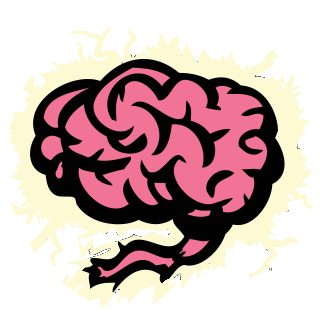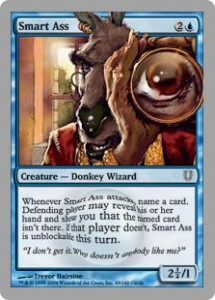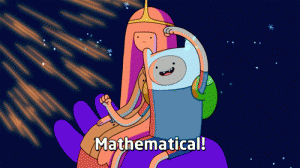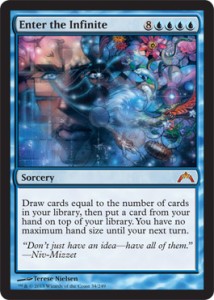
Let’s continue our discussion of the Unified Theory of Commander with a simple question. Would you generally rather be the player at the table with zero cards in hand or the player with a full hand of seven cards?
No, this isn’t a trick question. It’s a thought exercise to make sure you are in the right frame of mind for the next element in our Unified Theory. I’ve had to invest a lot of effort convincing players why mana is important enough to be first in the My Deck Tickled A Sliver mnemonic, but pretty much everyone nods in agreement when I mention that drawing cards is the next most important element. It just seems obvious. Yet one of the most common pieces of advice I have to give to players looking for help with their decks is to include more ways to reload their hand. So ask yourself again, do you want to have seven cards in hand or zero? Good. Now let’s figure out how to be the player with the hand full of awesome cards.
Card Draw is Mathematical
We spent a lot of time doing hypergeometric calculations in the first discussion on mana, so I don’t want to dive too deep into that again, although we can use that math to demonstrate exactly why card draw is so valuable. Remember that we defined “success” in those calculations based on the percent chance that we’ll hit the right number of mana sources by a specific turn. That calculation was done by using the population (size of the deck), number of successes in the population (amount of mana sources), and the sample size, which is the number of cards you’ve drawn from the deck by the time you reach the target turn.
In the mana article, we adjusted our probability of success by increasing the number of successes in the population. By going from 40 mana sources to 43, we increased the the chance of hitting our critical mana from 72 percent to 97 percent and made our fictional aggro deck more consistent. Card draw can also improve our chances of success, but it does so by adjusting a different variable. Drawing cards increases our sample size, giving us more chances to hit the mana we need to cast our big, battlecruiser spells.
This is important to remember because Commander decks are a fixed size. So while I can advocate devoting more cards in the deck to mana production, its impossible to devote “more” slots to each of the other elements as well. We cannot just increase the number of successes in the population for both Threats (element #3) and Answers (element #4) without taking from somewhere else. Drawing more cards to adjust the sample size instead provides a better, more flexible means of creating consistency.
In practical terms, drawing cards is actually creating options for an EDH deck. In any particular game state, your deck might want a specific creature on the table to threaten an opponent. It might need a specific answer in hand to deal with a scary enemy board. It also might desperately need to draw another land so you can play a blocker and leave mana up for a counterspell after. The more cards you can get into hand, the more likely those favorable options will be available when needed.
Crayons (AKA – Drawing with Colors)
Just like you don’t have to play green to achieve the right amount of mana, you also don’t have to play blue to find satisfactory card draw options in the format. That doesn’t mean blue isn’t the best color for drawing cards, because that’s specifically its slice of the color pie. [card]Blue Sun’s Zenith[/card] and similar options are always going to be the easiest, most cost-efficient ways to get cards. What it does mean is any deck builder playing with any color combination can find ways to reload their hands. Thanks to twenty years of printing cards and artifact-based draw, every color has a fair amount of available options.
Black is second-best at drawing cards, although those cards usually come at a price. [card]Necropotence[/card] and [card]Phyrexian Arena[/card] are the quintessential black card draw options, asking you to pay life to get cards into your hand. Fortunately, players start with 40 life and black provides access to spells like [card]Exsanguinate[/card] that refill your life total, so paying one per card usually isn’t too painful.
Green tends to draw cards based on creatures. [card]Greater Good[/card] and [card]Garruk, Primal Hunter[/card] draw cards based on a creature’s power, while [card]Soul of the Harvest[/card] and [card]Primordial Sage[/card] draw based on creatures coming into play under your control. Thanks to the color-shifted cards in the Time Spiral block, Green also has access to [card]Harmonize[/card], providing three cards for just four mana. Seems like pretty good card draw options for the color that is sometimes accused of being “Magic for Dummies,” doesn’t it?
Red’s options are a bit more limited, getting access to “rummage” effects (allowing players to draw cards if they discard first) or temporary card advantage effects like [card]Prophetic Flamespeaker[/card]. It also has cards such as [card]Wheel of Fortune[/card] and [card]Reforge the Soul[/card] that reward players for getting cards out of their hands. By making everyone discard their hand and draw seven more, the mage who puts more permanents onto the battlefield first gains a significant advantage.
White tends to have the most narrow draw options, with cards like [card]Kor Spiritdancer[/card] or [card]Mentor of the Meek[/card] that fall into very specific deck archetypes. Otherwise, white has to fall back on colorless draw, such as [card]Staff of Nin[/card], [card]Skullclamp[/card], and [card]Mind’s Eye[/card]. These artifact-based draw cards generally work quite well in white due to the color’s ability to search for artifacts and enchantments. Getting these into play will help even a mono-white deck keep the cards flowing freely.
Draw in Action: Ephara
So what does a deck that satisfies this element of our theory look like? My friend Swag has an [card]Ephara, God of the Polis[/card], deck that I think epitomizes this particular element in our Unified Theory. While he professes to “hate card draw” during our games, what he really means is that he hates when other people draw cards. He’s pretty happy to be drawing them for himself. I made the mistake of trading him an Ephara and he ended up putting together this deck:
[deck title= Ephara’s Flash Mob]
[Creatures]
*1 Snapcaster Mage
*1 Deputy of Acquittals
*1 Whitemane Lion
*1 Suture Priest
*1 Spellstutter Sprite
*1 Silverchase Fox
*1 Vedalken Plotter
*1 Pestermite
*1 Aven Mindcensor
*1 Stonecloaker
*1 Dewdrop Spy
*1 Deceiver Exarch
*1 Ethersworn Shieldmage
*1 Venser, Shaper Savant
*1 Phyrexian Metamorph
*1 Dust Elemental
*1 Thistledown Liege
*1 Restoration Angel
*1 Glen Elendra Archmage
*1 Kor Cartographer
*1 Hollowhenge Spirit
*1 Voidmage Husher
*1 Ephara, God of the Polis
*1 Sturmgeist
*1 Teferi, Mage of Zhalfir
*1 Darksteel Sentinel
*1 Deadeye Navigator
*1 Draining Whelk
*1 Angel of Serenity
*1 Phyrexian Ingester
*1 Diluvian Primordial
*1 Luminate Primordial
*1 Trench Gorger
[/Creatures]
[Spells]
*1 Saving Grasp
*1 Wayfarer’s Bauble
*1 Enlightened Tutor
*1 Flickering Ward
*1 Sol Ring
*1 Swords to Plowshares
*1 Scout’s Warning
*1 Mystical Tutor
*1 Hoofprints of the Stag
*1 Confound
*1 Talisman of Progress
*1 Remand
*1 Azorius Signet
*1 Into the Roil
*1 Fellwar Stone
*1 Forbid
*1 Hinder
*1 Cackling Counterpart
*1 Repulse
*1 Sphinx’s Revelation
*1 Dream Fracture
*1 Capsize
*1 Detention Sphere
*1 Return to Dust
*1 Cloud Cover
*1 Dismiss
*1 Evacuation
*1 Desertion
*1 Austere Command
[/Spells]
[Lands]
*1 Academy Ruins
*1 Adarkar Wastes
*1 Azorius Chancery
*1 Command Tower
*1 Calciform Pools
*1 Celestial Colonnade
*1 Eiganjo Castle
*1 Glacial Fortress
*1 Hallowed Fountain
*1 Halimar Depths
*1 Homeward Path
*1 Kor Haven
*1 Maze of Ith
*1 Minamo, School at Water’s Edge
*1 Mystic Gate
*1 Reliquary Tower
*1 Skycloud Expanse
*1 Springjack Pasture
*1 Strip Mine
*1 Temple of Enlightenment
*1 Temple of the False-God
*1 Vesuva
*5 Plains
*11 Islands
[/Lands]
[/Deck]
Swag focuses on playing a control game with this deck and uses a whole host of flash creatures to repeatedly trigger Ephara’s ability to draw cards. As very few of his cards require being cast on his own main phase, Swag is able to leave mana open to threaten a counterspell or a bounce effect during everyone else’s turns. The counter spells, flicker effects, and untapped mana serve as excellent rattlesnakes that tend to keep this deck in the game all the way to the very end. The repeatable card draw also means he rarely misses a land drop, satisfying the first element in our Unified Theory of Commander without using green at all.
The biggest takeaway from this should be the value of recurring card draw compared to one-time effects. It’s nice when you get to cast [card]Divination[/card] and draw a couple cards, but its nicer still when [card]Rhystic Study[/card] sticks around and draws you ten. Even if your deck isn’t a well-oiled competitive EDH machine, it can benefit tremendously from having a recurring source of card draw on the table. Whatever your plan for the deck is, it’s more likely to be able to accomplish its goal if you see more cards. So even if you aren’t trying to “win” exactly, drawing more cards lets you put your own janky, ridiculous plans into action.
To Be Continued…
Of course, taking cards off the top of your deck isn’t the only way to hit the cards you need or to produce a resource advantage in Magic. Card advantage is a troublesome, much debated topic in Magic circles and a challenging one to tackle in terms of a multiplayer format like EDH. Utilizing tutors, graveyard recursion, and other effects to create additional value from your cards all support the elements of our Unified Theory. Unfortunately, those topics will have to wait for a future article.
For now, remember that including ways to reload your hand is vitally important in Commander. Getting cards into your hand creates options that allow you to execute your game plan and respond to others. There isn’t a hard and fast rule for how many draw options to put into your deck, but I’d argue you want to see at least one in every single game you play. So take a look at your deck again and ask yourself: does this deck turn me into the player with zero cards or the one with a full hand of options? You already know which player you want to be, so make sure you are piloting a deck that helps you get there.
4 comments on Unified Theory of Commander: Draw
Leave a Reply to James Cancel reply
You must be logged in to post a comment.




I would love to see some discussion, especially in an article such as this, about card-draw that’s viable in multiplayer games (as its particularly relevant to EDH). The conclusion that cards like rhystic study are much better than divination begin to delve into this and i agree with totally.
I know most commander writers don’t like to do lists, but I would find it helpful if you did some top ten’s for MDTAS, maybe broken down by color, or budget options.